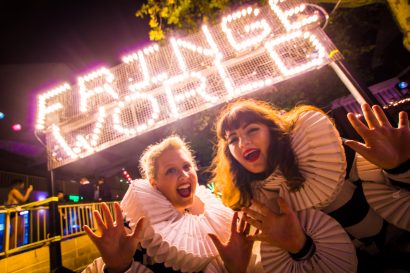From cult street fashion to a Barbie-inspired ballet, West Australian designer Deborah McKendrick has always been driven by a desire to experiment. Her latest venture into painting and portraiture is no exception, discovers Nina Levy
Perth’s own cultured cosmopolitan
26 July 2023
- Reading time • 10 minutesVisual Art
More like this
- A walk with Tina Stefanou
- A blaze of glorious people
- Diving into the gothic world of Erin Coates
With a back catalogue that includes a cult status fashion label, hand-finished couture garments, luxury lounge and travel wear, and costumes for Chrissie Parrott’s late 90s Barbie-esque ballet Coppelia, Deborah McKendrick’s design practice may be diverse but it’s united by the vibrant imagination of its creator.
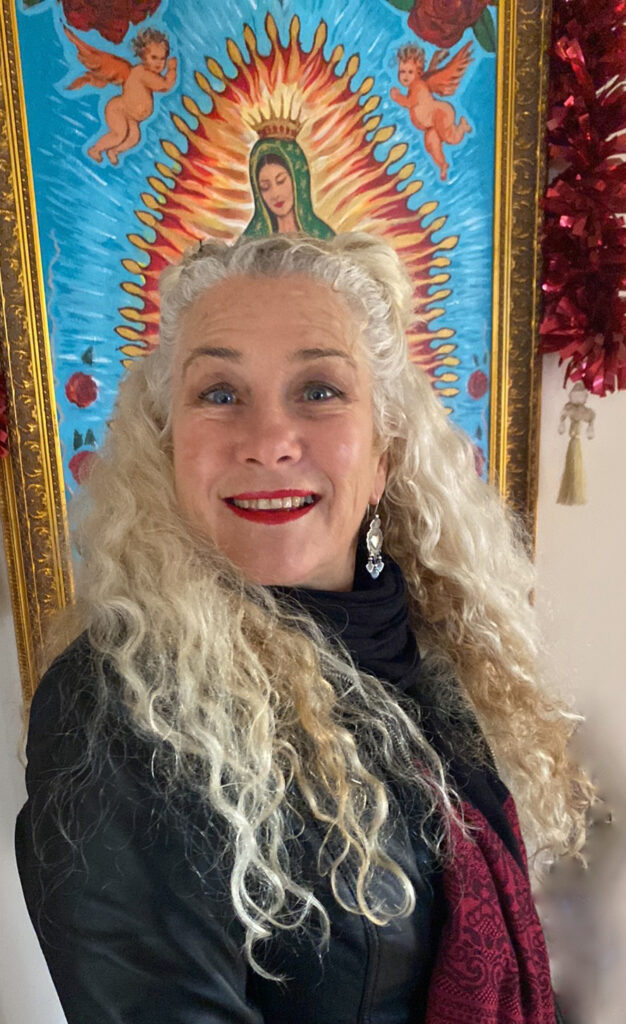
McKendrick’s 40-year career as a fashion designer was punctuated with gigs designing costumes for the likes of West Australian Ballet, Yirra Yaakin, Stalker and Marrugeku, and Chrissie Parrott Dance Company. Remounted in 2000 and 2007 by West Australian Ballet, Parrott’s Coppelia is perhaps her best-known costuming gig – who can forget those ice-cream-hued dresses, with their crisp skirts and matching platform sandals?
In recent years, McKendrick has turned her energy to painting, in particular portraiture. Though the medium is very different to the textiles she has worked with previously they are somehow imbued with a similar sense of colourful energy.
As a long-time fan of McKendrick’s work, Nina Levy was thrilled to have a quick chat ahead of the artist’s September exhibition, Cultured Cosmopolitans, at Terrace Greenhouse Gallery in Fremantle.
Nina Levy: Tell me about your childhood. What role did the arts and creativity play in your life when you were growing up?

Deborah McKendrick: I was born in the middle of the night in a seaport town in southern England into a creative and vibrant family in 1959. My mother’s family was filled with performers, dancers, artists, comedians and even a tailor. We adored our constant dalliances with the arts.
In 1966 my adventurous family immigrated to Perth, Western Australia, crossing the Equator and passing through the Suez Canal. Arriving in the port of Fremantle on a stinky hot April morning, bright coloured streamers were spitting forth from the docks, people were waving and welcoming.
There was always creative adventure happening around me, but I was quite slow to take it up, too much competition in the family and I was lacking in confidence. After a stint as a life model, I had an overwhelming desire to finally immerse myself in the arts. I was an eager student and indulged myself forever more in my creative pursuits. Perth was (and still is) a fantastic seeding ground for creative freedom.
NL: You studied graphic design at Perth Technical College (now TAFE) – what made you choose graphic design?
DM: Discipline and challenge. There was design technique, illustration, lettering, history, drawing, media, photography, inspiring people and still a lot of freedom and encouragement to be an individual. I was also accepted at Claremont College of the Arts but realised that I was not ready for that kind of freedom. I knew I would revisit the fine arts later in my life.
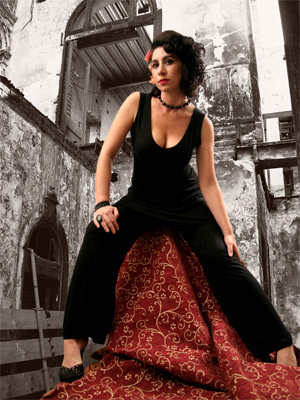
NL: You went on to make a career in the fashion industry, establishing the fashion label Eldorado (1986-1996), and later Velvet Sushi luxury loungewear and travel clothing (2007-2020). Why and how did you move from graphic design to fashion?
DM: I had a fantastic time at Perth Tech but I wasn’t particularly drawn to follow any particular direction and left after two years. Some friends were playing with fabrics and making some really cool original clothing, I was enthralled and so inspired.
I quickly set about applying my design skills into this new direction. It was the 80s, you could do anything and I did. My first label was very experimental, ripping, printing, dying, binding, all with natural fabrics. I made my own patterns and started making a name for myself in the art/fashion scene. It was wild.
Then I met this really amazing handsome designer/artist who was a bit older and more experienced than me. He decided I might be useful and we started Eldorado, a street/club label that grew a cult following. That got even wilder. Great fun, lots of hard work. I got a bit burnt out in the end.
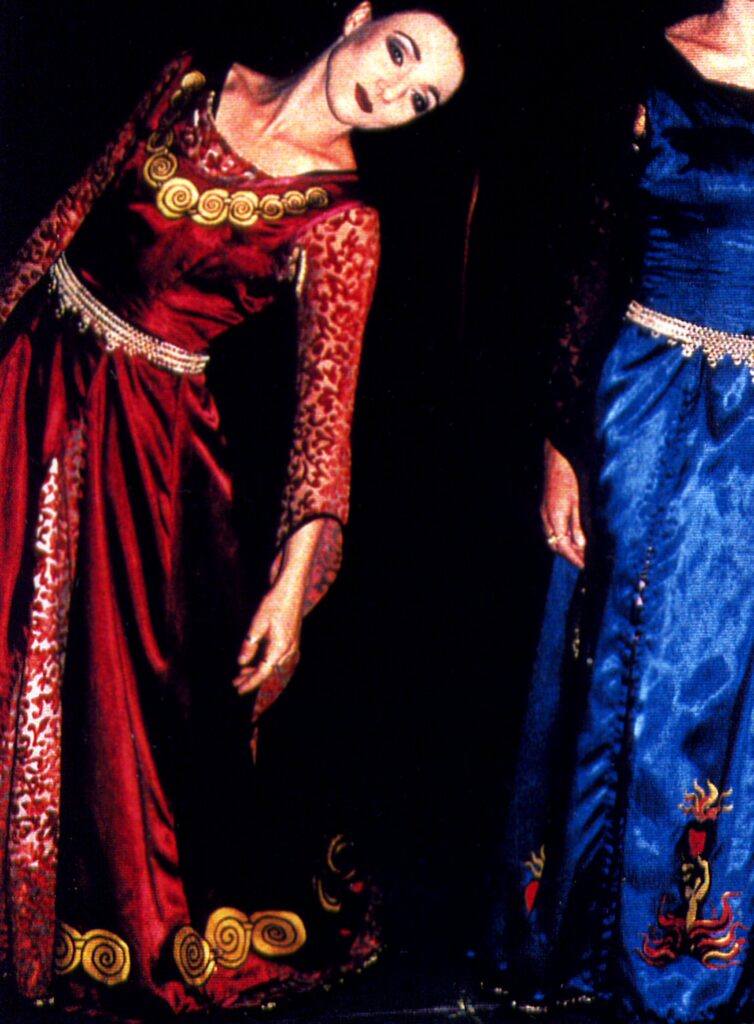
NL: You also worked in costume design with various artists but it’s your designs for Tower, Chrissie Parrott’s 1995 retelling of Tristan and Isolde, and Coppelia (for West Australian Ballet, 1998, 2000, 2007) that are most memorable, for me. How did you and Chrissie come to collaborate?
DM: Chrissie is fab and I loved working on that show. It was my first costume design gig. Chrissie and I had first met through a fashion art show Eldorado had been involved in for the Fringe Festival called Body Language, which was remounted at the Red Parrott Night Club.
When Chrissie was working on Tower she mentioned that she did not have a costume designer for the show and time was running short, my radar went “ping”. At that time Eldorado was in its death throes after ten years and I was just busting to do something different. Chrissie and I got on really well and had great respect for each other and our work, it was a very successful collaboration.
NL: Costuming is a crucial part of any performance, but this is particularly true of Tower and Coppelia – those costumes could have been exhibited in their own right. What was involved in designing those shows?
DM: Tower was great because I was completely new to dance costume design, but I love researching history. I am very organised and used to working to a budget and tight time line, so I pulled a team together to complete Chrissie’s and my vision. I hand cut stencils to print heraldic designs, employed chainmail makers, worked closely with the other sewers and prop makers to make sure that the costumes were not only true to the time period but had a contemporary edge, with a beautiful freedom to move and dance. Fabrics are paramount.
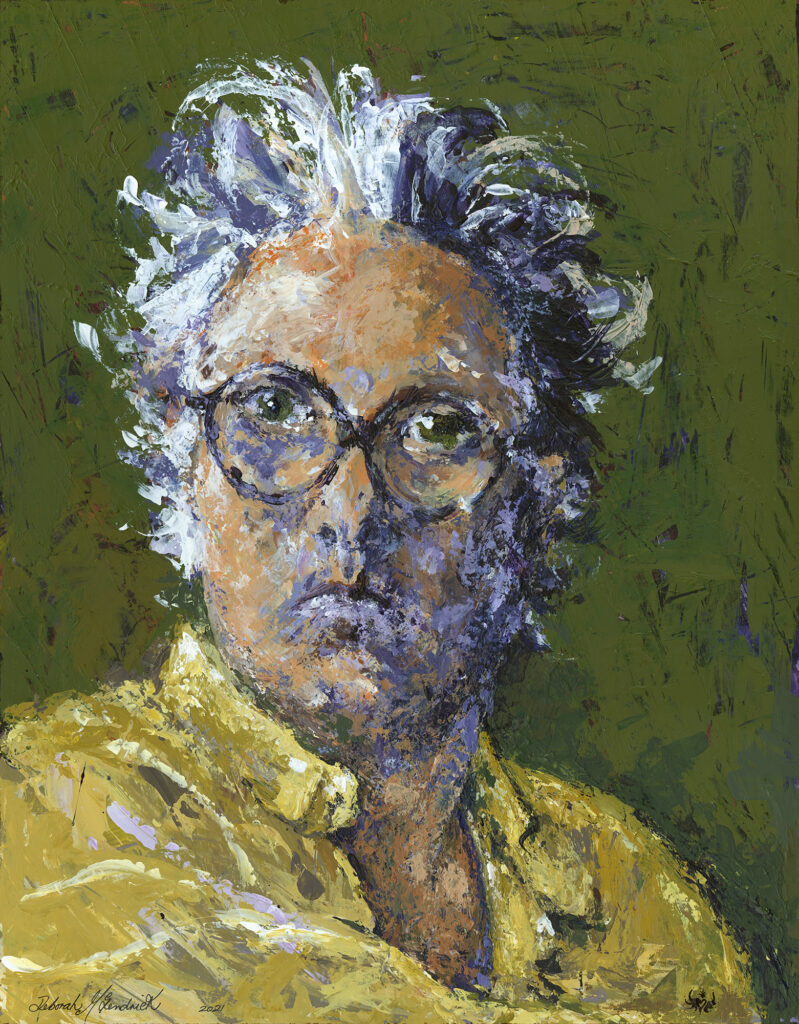
Coppelia was a different fish. I absolutely loved being a part of that production. I was living in Paris at the time when Chrissie came to visit and lured me back to Perth. Paris definitely influenced my designs for Coppelia. The West Australian Ballet had a whole department just there to make costumes and they were simply joyous.
NL: Your costume work happened alongside your work as a fashion designer. What made you decide to shift your focus to visual art?
DM: It was time! Economically, emotionally all paths pointed to the canvas. Some have a calling to God, I have a calling to Art.
NL: Currently you focus on portrait painting and your upcoming exhibition Cultured Cosmopolitans is a portrait exhibition. How have you chosen the subjects for the exhibition?
DM: There is depth and there is more than just portraits. It is scary and emotional for me, but thrilling. I chose random people around me, no particular methodology, some I know well, some I don’t. I have tried to be open and respectful to my sitters (subjects) as they have had to be with me, but I’ve been very experimental with the use of paint and other mediums as I really don’t have any direct tutelage and I just do what I want. I love the challenge, but it sometimes makes me crazy and I have to run away.
NL: How does your experience in fashion and costume design shape the kind of work you make as an artist?
DM: Sometimes I push it far away and other times I embrace it like an old lover. The richness of ideas and creativity have seeped into my soul like an endless universe that I can tap into any time.
Pictured top: One of the portraits from ‘Cultured Cosmopolitans’ – Deborah McKendrick, ‘De-Flowering the Monarchy’. Self portrait. Acrylic on pine board. Photo supplied
Like what you're reading? Support Seesaw.



